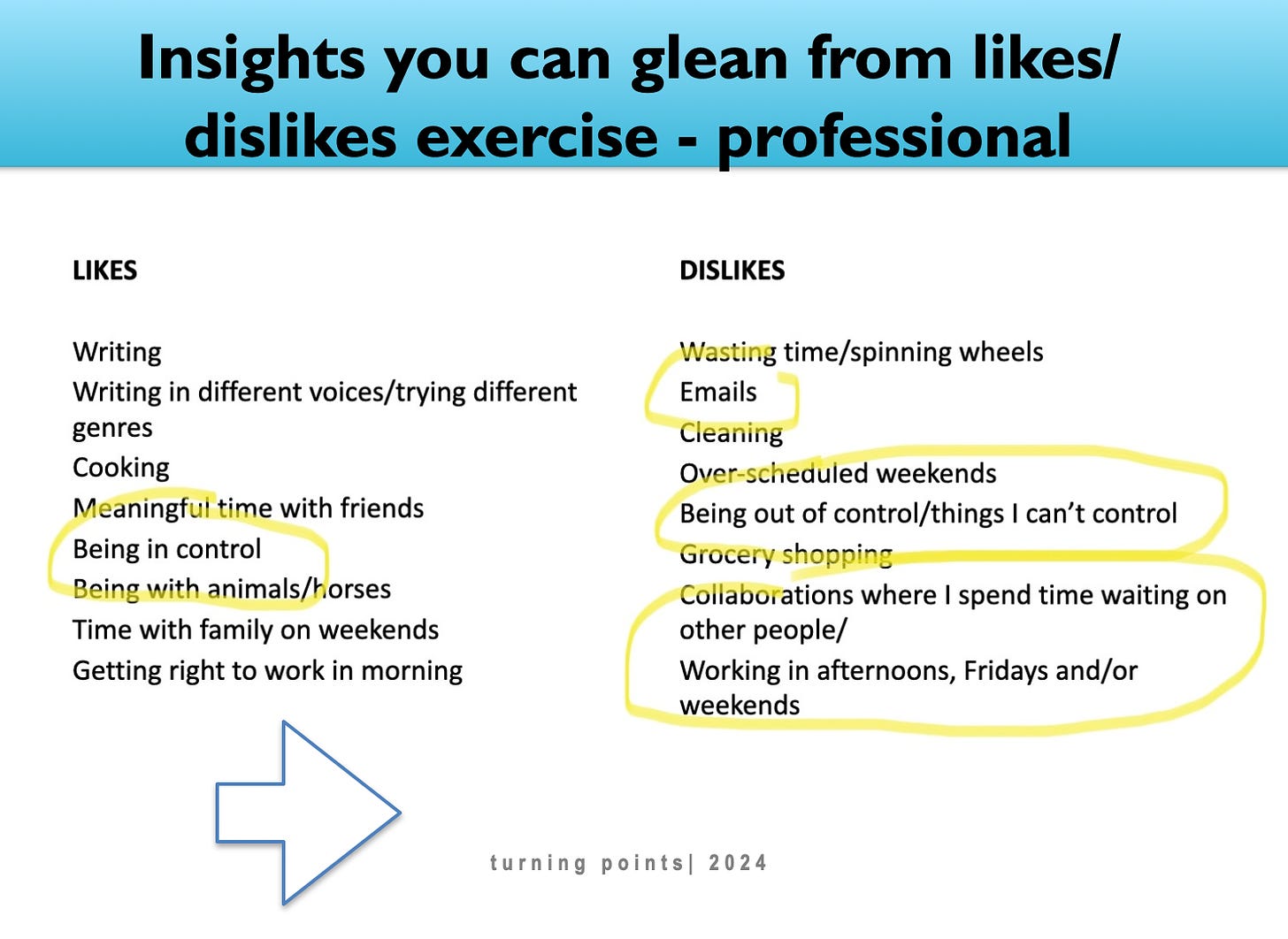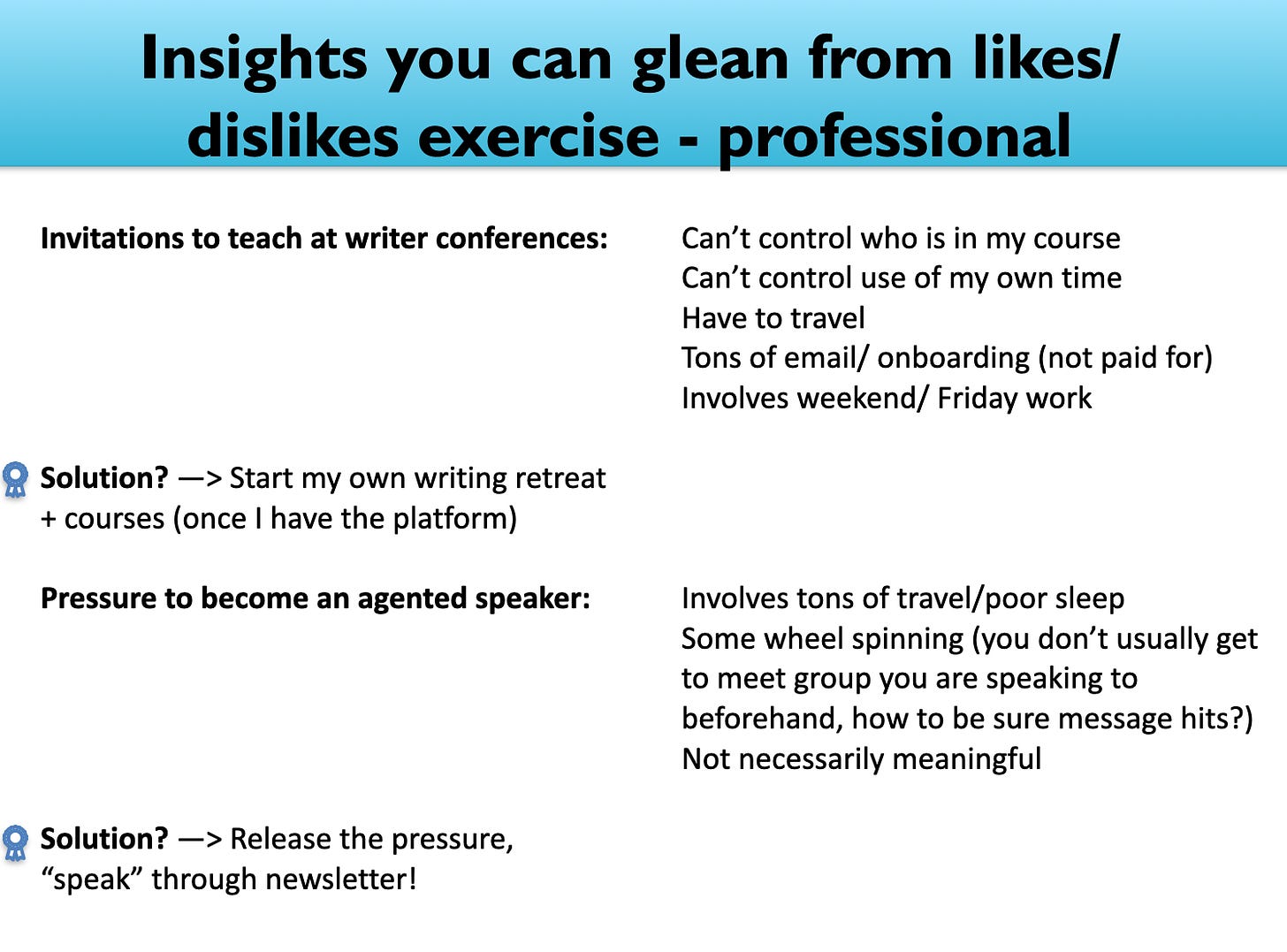My top 5 Time Management tips for writers
Including how to write in the time you've set aside for writing, plus a special discount code for new subscribers.
Hello and happy Wednesday!
As promised, I’m following our “Craft from the Couch” discussion with bestselling author M.L Rio about deadlines with some thoughts of my own on Time Management.
Over the winter, I taught a class on Time Management so some of you will be familiar with the techniques I’m going to mention. To me, time management is mostly about managing energy and emotions and erecting boundaries that you encourage others to respect. If you don’t have time to read this entire post today, those are my trade secrets.
If you do have time, these are the elements of time management we’ll be looking at after the paywall:1
How to understand what you should be spending time on
How to understand who you should/shouldn’t be spending time with
Determining your identities and how to protect them
Energy blocking: what it is and how it works
How to write during the time you’ve set aside for writing
Please note: the video of the three-hour Time Management class I taught is available for purchase. Simply write me at the querydoula (at) gmail (dot) com for special pricing. In the class, I share unique, effective techniques that will change the way you approach your down time, work and social life, allowing you to liberate more space (emotionally and physically) to do creative work.
Let’s get down to business. We’ll tackle free time, first.
Time management tip #1: Managing your free time
When we’re young, time is a renewable energy source. Time feels so abundant, there is even time to waste! But as we get older (I’m 45 myself), time becomes a luxury and many of us—writers especially—have to spend time defending the time we have to write.
To me, this is an argument for spending your time wisely, which means not wasting time on activities and people who aren’t filling your cup
When I work with clients to improve their productivity, I have them draft a simple list of “likes” and “dislikes” in several spheres: the domestic sphere, the social sphere and the professional realm.
Once we have those worksheets filled, I’ll guide them through the “dislike” column and discuss how to eliminate wasted time and energy so that the person can spend more time doing what they like. My Time Management class will walk you through exactly how to do this2, but here are two screenshots from my own worksheets.
First up, you’ll see my professional “likes and dislikes” list. The yellow circles represent items I feel I can act on, protect against, and improve.
And here, you’ll see the resolutions that I set after examining my professional likes and dislikes:
In the above screenshot, I’m working through professional pressures I’ve felt over the past few years to:
1) accept invitations to teach at writers conferences.
2) find a speaking agent to boost the amount of paid speaking gigs I do.
But if I compare these pressures to my initial list of professional likes and dislikes, I see that both line items are going to bring more dislikes into my life than likes. Accordingly, I came up with a way to teach more and to speak more, but on my own terms.
This exercise helps differentiate what you want (or think you want, or perhaps envy about others) from what brings you happiness and ease. (I’ll walk you through exactly how to craft this exercise and the insights you can glean from it in the course itself.)
New subscribers: Interested in reading the rest of this post? I’m offering a special “dog days of summer” discount for paid subscriptions to my Substack. Click this link to use this offer to unlock the rest of this post and my archives.
https://courtneymaum.substack.com/dogdays





